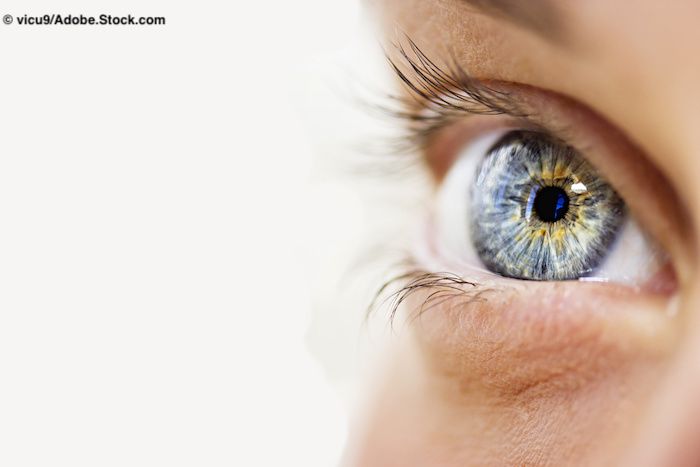Pipeline for dry AMD holds promise

About 85% to 90% of the cases of age-related macular degeneration (AMD) are the “dry” (atrophic) type.
People with this type of AMD may have good central vision (20/40 or better) but substantial functional limitations that may include fluctuating vision, difficulty reading because of limited central vision, or limited vision in mesopic conditions, according to the Age-Related Macular Degeneration Foundation (www.macula.org), a nonprofit group that not only funds research into AMD, but provides education for people affected by the disease.
To date, there are no approved pharmacologic treatments for the dry form, but there are several studies under way. Some of the studies listed on ClinicalTrials.gov:
• Chinese researchers are evaluating retinal pigment transplantation with cells derived from human embryonic stem cells in a phase I/II study (NCT03046407). This study intends to transplant human embryonic stem cells derived retinal pigment epithelia into subretinal space of patients to treat dry age-related macular degeneration (dry-AMD).
Through the statistical analysis EDTRS, BCVA, OCT, ERG, Fluorescein angiography, Ophthalmic AB ultrasound changes between before and after the treatment to assess the safety and efficacy of RPE transplants to treat dry AMD.
• Two groups are evaluating the PRIMA Bionic Vision system, a retinal prosthesis being developed by Pixium Vision (NCT03392324 in the United States and NCT03333954 outside the United States).
According to the study details, subjects are provided with a PRIMA subretinal implant in one eye. A camera integrated in the external components of the implant captures visual information of the environment, this information is processed by a pocket processor and then transmitted via projected infrared light onto the implant. The implant received the projected infrared light and stimulates the nerve cells of the retina.
Interim analysis will be performed at 6 months after implantation, and patients will be monitored for up to 36 months.
• Hemera Biosciences is investigating a biologic to treat dry AMD (NCT03144999).
AAVCAGsCD59, an ocular gene therapy product that is injected in to the eye in the physician's office, causes normal retinal cells to increase the expression of a soluble form of CD59 (sCD59). This soluble recombinant version of the naturally occurring CD59 is designed and intended to protect retinal cells that are responsible for central vision by inhibiting the formation of the membrane attack complex (MAC), the terminal step of complement-mediated cell lysis.
In gene therapy the cells of the retina are potentially permanently altered to make sCD59 for the life of the patient. With gene therapy only one injection is needed for the drug to be effective for the patient's entire life. This study will evaluate the safety after a single injection of AAVCAGsCD59 administered in an office setting for patients whose enrolled eye has advanced dry AMD with geographic atrophy. The initial study is 26 weeks followed by an additional 18-month safety evaluation.
• Allegro Ophthalmics is evaluating the safety and exploratory efficacy of 1.0 mg of risuteganib (Luminate) in a phase II study (NCT03626636) of patients with non-exudative AMD. Study completion is expected in mid-2019.
• Opthotech is evaluating intravitreous administration of avacincaptad pegol (Zimura) when administered in subjects with geographic atrophy (GA) secondary to dry AMD in a phase IIb study (NCT02686658). Results are expected at the end of the year.
• Regenerative Patch Technologies has initiated a phase I/IIa clinical trial designed to assess the feasibility of delivery and safety of human embryonic stem cell-derived retinal pigment epithelial cells on a parylene membrane (CPCB-RPE1) in patients with advanced, dry AMD (NCT02590692).
The study will include two cohorts, each of 10 patients. For the first cohort, the study population will be patients with advanced, dry AMD with evidence of significant geographic atrophy involving the fovea. These patients will have significant central vision loss with best-corrected visual acuity (BCVA) of the eye to be implanted of BCVA of 20/200 or worse. Each of these patients will have substantial RPE and photoreceptor loss. Patients will be screened for overall health status to minimize risks associated with retinal surgery and any subsequent immunosuppression.
As the safety and tolerability of CPCB-RPE1 is demonstrated in the first cohort, patients with less advanced disease will be recruited into a second cohort in this phase I/IIa clinical trial.
In this second cohort patients will have significant central vision loss with BCVA of the eye to be implanted of 20/80 or worse, but better than or equal to 20/400 with comparably less damage to the RPE/photoreceptor complex than Cohort 1. These patients will be screened in the same manner for overall health status to minimize risks associated with retinal surgery and any subsequent immunosuppression. Assessments of visual function will be the same as in Cohort 1. Study completion is expected in 2022.
• Astellas Institute for Regenerative Medicine is conducting a phase I/II study to evaluate the long term safety and tolerability of MA09-hRPE cellular therapy in patients with advanced dry AMD from 1-5 years following the surgical procedure to implant the MA09-hRPE cells (NCT02463344).
In the company’s core protocol, 13 patients were treated: 10 patients with profound vision loss (visual acuity ≤20/400) received a single subretinal injection of MA09-hRPE cells, starting at a dose of 50,000 MA09-hRPE cells transplanted (three patients), 100,000 MA09-hRPE cells transplanted (three patients), 150,000 MA09-hRPE cells (three patients) and increasing to a maximum dose of 200,000 MA09-hRPE cells transplanted (one patient).
Three patients with severe to moderate loss (visual acuity ≤20/100) received a dose of 100,000 MA09-hRPE cells.